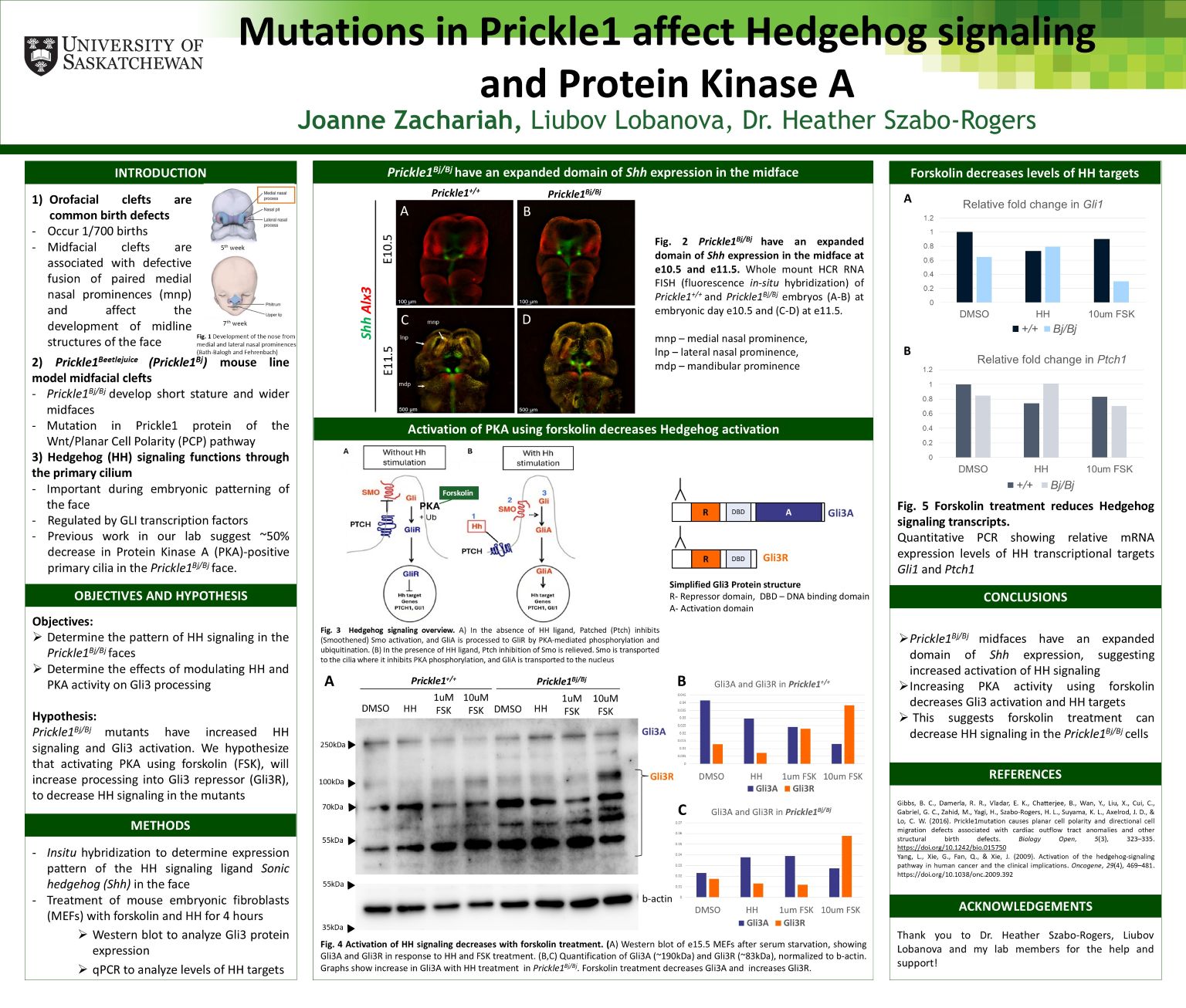
Mutations in Prickle1 affect Protein Kinase A and Hedgehog signaling
Joanne Zachariah
Embryonic facial development involves the fusion of paired facial prominences, including the medial nasal prominences (mnp). Disrupted fusion of the mnp can lead to midfacial lefts, where structures including the nasal septum and upper lip are affected. However, less is known about the mechanisms underlying midfacial clefting. Our lab uses the rickle1Beetlejuice (Prickle1Bj) mouse line to model midfacial clefts. Prickle1Bj/Bj have a mutation in the Prickle1 protein of the Wnt/Planar cell polarity pathway, and develop wider faces and midline cleft lip. An important signaling pathway during facial development is the Hedgehog (HH) pathway, which functions through the primary cilium. A key protein involved in the pathway is Protein Kinase A (PKA), which is involved in the proteolytic processing of the Gli transcription factors that regulate HH signaling. We previously observed ~50% decrease in PKA-positive primary cilia in the Prickle1Bj/Bj mnp. We performed insitu hybridization and observed an expanded domain of the HH signaling
ligand, Sonic hedgehog (Shh) in the midface, suggesting increased activation of HH signaling. We showed using western blotting that HH induces Gli3 activation in the Prickle1Bj/Bj cells, and that increasing PKA activity using forskolin can decrease Gli3 activation. We also showed decreased relative mRNA expression of HH targets Gli1 and Ptch1 using qPCR, suggesting that forskolin treatment can decrease HH signaling in the Prickle1Bj/Bj cells.
